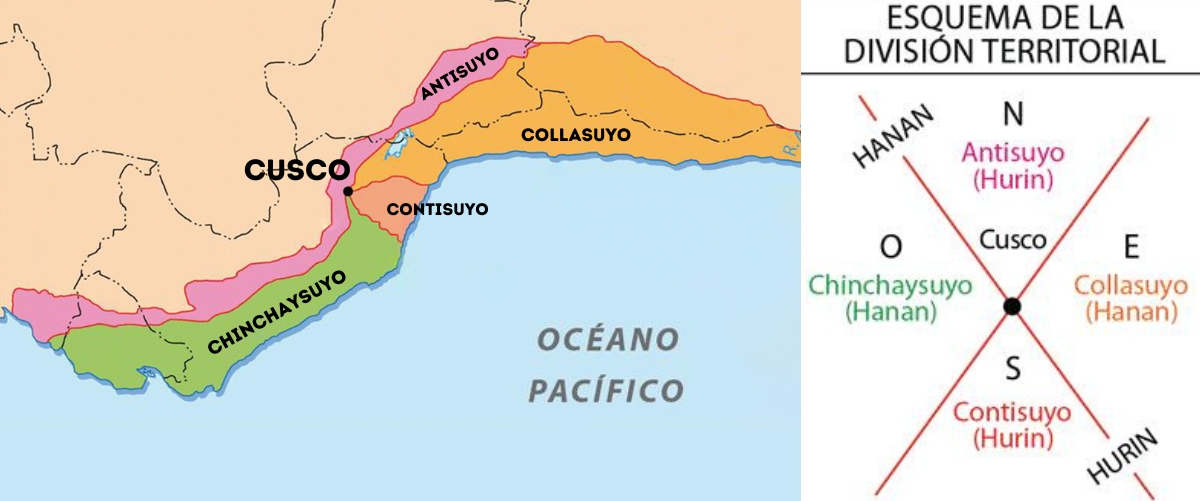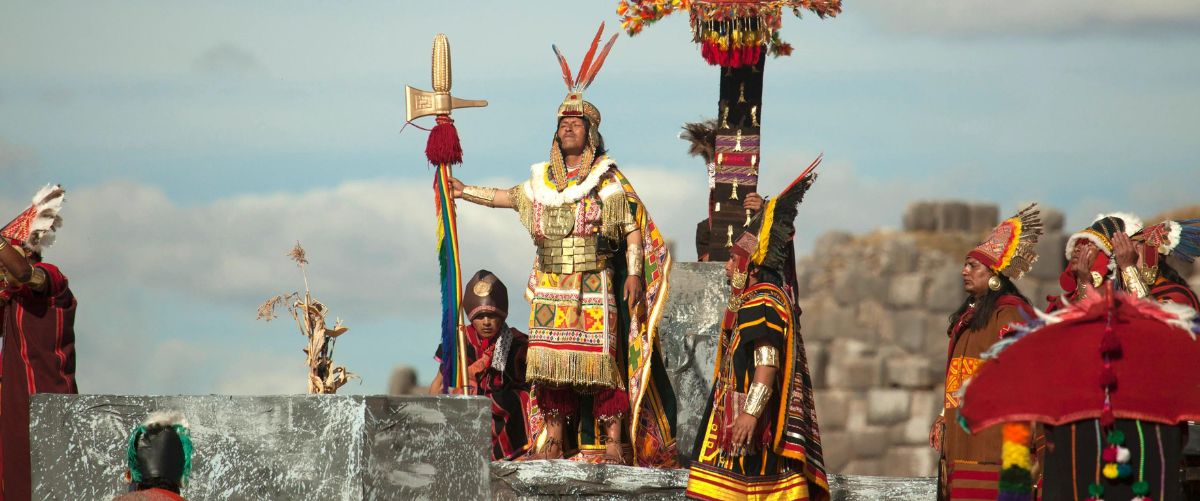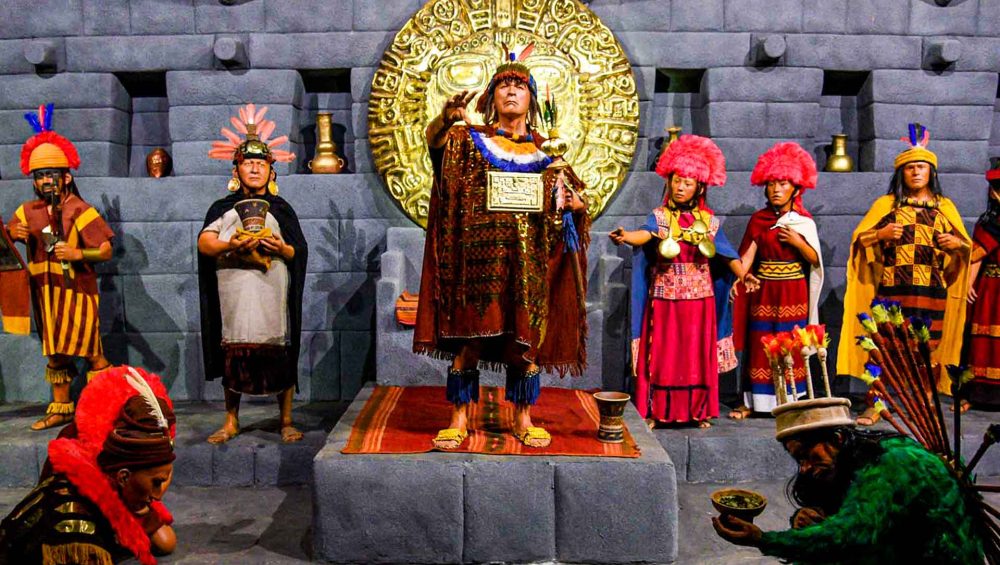What does Tahuantinsuyo mean?
The Tahuantinsuyo was the most prominent empire in South America, known for its vast expanse and cultural richness, which can still be appreciated in the territories that were part of its domain. A clear example of its splendor is the majestic Inca Citadel of Machu Picchu in Peru.
What does Tahuantinsuyo mean?
The word “Tahuantinsuyo” comes from Quechua and translates to “four regions”. “Tahua” means four, and “suyo” means region, reflecting the division of the Inca Empire into four regions or “suyos”: Collasuyo, Chinchaysuyo, Antisuyo, and Contisuyo. These regions not only organized the empire administratively but also represented the geographical and cultural diversity of the territories under Inca control.
What territories did the suyos encompass?
- Collasuyo: Located southeast of Cusco, this was the largest and least populated of the suyos. It extended from Urcos, south of the imperial city, through the Titicaca region; along the coast, it spanned from southern Arequipa to the Maule River, at the empire’s southern border.
- Contisuyo: Situated southwest of Cusco, its territories extended to the coastal region, including the lands between the Quilca and Ica river valleys.
- Chinchaysuyo: This territory extended northwest of Cusco, reaching from Ayacucho and Ica all the way to the Ancasmayo River.
- Antisuyo: Northeast of Cusco, the lands of Antisuyo reached the high Amazon jungle. Climatic and geographical conditions prevented further expansion into the jungle interior.

What territories did the Tahuantinsuyo encompass?
In the 13th century, the Incas, originating from the Peruvian highlands, settled in Cusco Peru after confronting the Aymara culture. Once they consolidated their sovereignty in the city, they began expanding the empire, which at its peak covered approximately 2,500,000 km², including territories of what are now Peru, Bolivia, Chile, Ecuador, Argentina, and Colombia.
Social Structure of the Incas
At the pinnacle of the Incan social hierarchy was the Inca, considered the son of Inti (Sun in Quechua), and divinely ordained to rule the Tahuantinsuyo. The only way to become an Inca was to belong to the bloodline, as the position was hereditary.
Just below the Inca was the Ayllu Panaca, consisting of the Inca’s immediate family. Notable among its members was the Auqui, heir to the empire, who governed alongside his father while preparing to take over the Tahuantinsuyo after the reigning Inca’s death. Also at this level was the Coya, the principal wife of the Inca and daughter of the Moon, who was dedicated to the responsibilities of the royal household. All these individuals were part of the royalty, having direct blood ties to the Inca.
Next was the privileged nobility, made up of the Inca’s extended family. Among them were the Curacas, local nobles, and chiefs of an ayllu, who were responsible for organizing tasks at the territorial level, acting as advisors, judges, and administrators of the ayllu’s assets (priests were also part of this privileged nobility).
Finally, there was the rest of the population, divided into three main groups:
- Hatunruna: The peasant people.
- Mitimaes: Responsible for colonizing new lands and teaching Incan customs.
- Yanaconas: Servants of the royalty, who were generally prisoners.
How Many Incas Governed the Tahuantinsuyo?
In total, thirteen Incas ruled the Tahuantinsuyo. The first was Manco Cápac and the last was Atahualpa, who governed during the arrival of the Spaniards on the continent.
One of the most notable emperors was Pachacútec Yupanqui, the ninth Inca, known for his efforts in expanding the Incan territory through the conquest of various ethnic groups such as the Ayarmacas, the Chancas, and the Suyos. Simultaneously, other communities joined the empire peacefully, such as the Cotanera, Omasayo, Cotapampa, and Aimarae.
Inca Pachacútec ordered the construction of the iconic Incan citadel of Machu Picchu, one of the great legacies of Incan culture in Latin America, which today receives thousands of tourists daily. Although initially thought to be a fortress, later research has concluded that Machu Picchu Peru was a place of rest and meditation for the Inca and his family.

How Did the Tahuantinsuyo Fall?
After the death of Huayna Cápac, the Inca Empire entered a succession crisis that pitted his sons Huáscar and Atahualpa, half brothers, against each other in a bloody war for power. Although Huáscar had been designated as the new Inca, his relationship with Atahualpa, who had been appointed governor of Quito, quickly deteriorated, culminating in armed conflict. Atahualpa emerged victorious and proclaimed himself emperor of the entire Tahuantinsuyo.
This internal conflict significantly weakened the empire, paving the way for the arrival of the Spanish conquistadors led by Francisco Pizarro. The Spanish arrived in Cajamarca, where Atahualpa was located, and captured him. In exchange for his release, they demanded a room filled with gold, a demand that was fulfilled by the Incas. However, the Spanish did not honor the agreement and executed Atahualpa, thus marking the end of authentic Inca leadership.
Subsequently, the Spanish appointed three puppet Incas, who ruled under their control and were not recognized as true leaders. In a final effort to resist Spanish domination, Manco Inca established a new bastion of resistance in Vilcabamba. This rebellion lasted until 1572, when Túpac Amaru, the last Inca leader, was captured and executed by the Spanish, sealing the definitive end of the Inca Empire.
Legacy of the Tahuantinsuyo
Today, the Inca heritage lives on in the streets of Cusco, where the history of the Tahuantinsuyo is reflected in monuments such as the Coricancha Temple, the main Inca temple, as well as the fortresses of Sacsayhuamán and Tambomachay. Additionally, Machu Picchu, with its unique history and beauty, remains a living testament to the greatness of this empire and is an essential destination for those wishing to connect with the pre-Columbian past of the Andean region.

